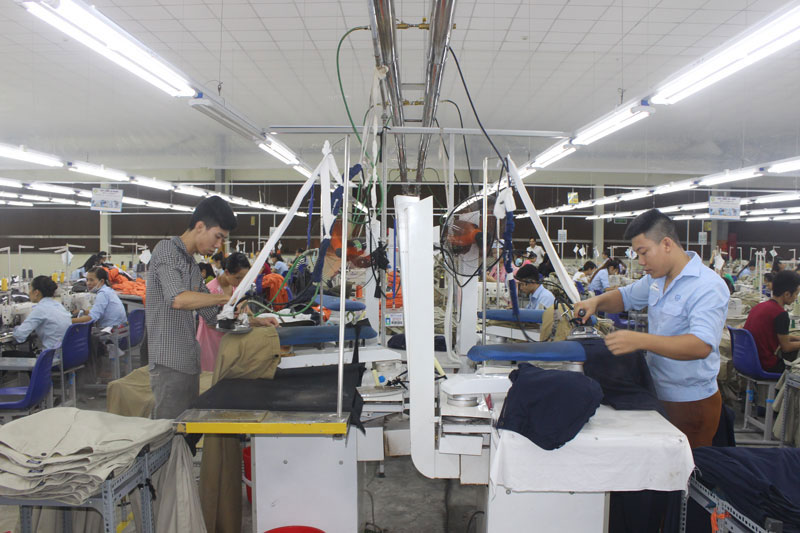



The export garment making centre in Tan Thanh hamlet, Co
Nghia commune (Lac Thuy) creates stable jobs and incomes for nearly 800 local
labourers.
In recent years, the face of Co Nghia commune and the living conditions of local residents have changed day after day. In 2011, when starting to implement the national target programme on building new-style rural areas, the commune met only four out of 19 criteria. During five years implementing the programme, with the involvement of the whole political system and local community, the commune has mobilised over 139 billion VND, of which 13.6 billion VND was contributed by local residents, to build infrastructure.
With the investment, Co Nghia’s infrastructure network has improved greatly, meeting socio-economic development requirements and serving production development and locals’ life.
The agricultural structure has been shifted on the right track. Specifically, to make use of the commune’s advantages and natural conditions, in February 2016, several households planted asparagus to replace low-yield food crops. At present, the total area of asparagus is expanded to 6ha, with the product sold inside and outside the province.
In addition, the commune has created favourable conditions for investors. In September 2014, the Duc Giang Corporation began construction on an export garment making centre in Tan Thanh hamlet, with a capacity of 200,000 units per year. Currently, the centre provides stable jobs for nearly 800 labourers in Co Nghia and other communes in Lac Thuy district.
In 2007, the Chi Ne
plantation where the first money printing factory of
With joint efforts of the whole political system and local residents, in 2015, Co Nghia was the first commune in Lac Thuy district to be recognised as meeting all new-style rural area criteria. Some of its achievements were a per capita income of 29 million VND a year, a household poverty rate of 8.6 percent, 95 percent of people in the working age having stable jobs, health insurance coverage of 78 percent, and 88 percent of households and over 90 percent of residential areas meeting standards for the titles of cultural family and cultural residential areas.
The commune has effectively fulfilled defence-military missions, thus helping maintain the commune’s security and develop Lac Thuy district./.